For more than 400 years, Kannauj artisans have been producing rose attar using the world’s oldest known perfume-making process.
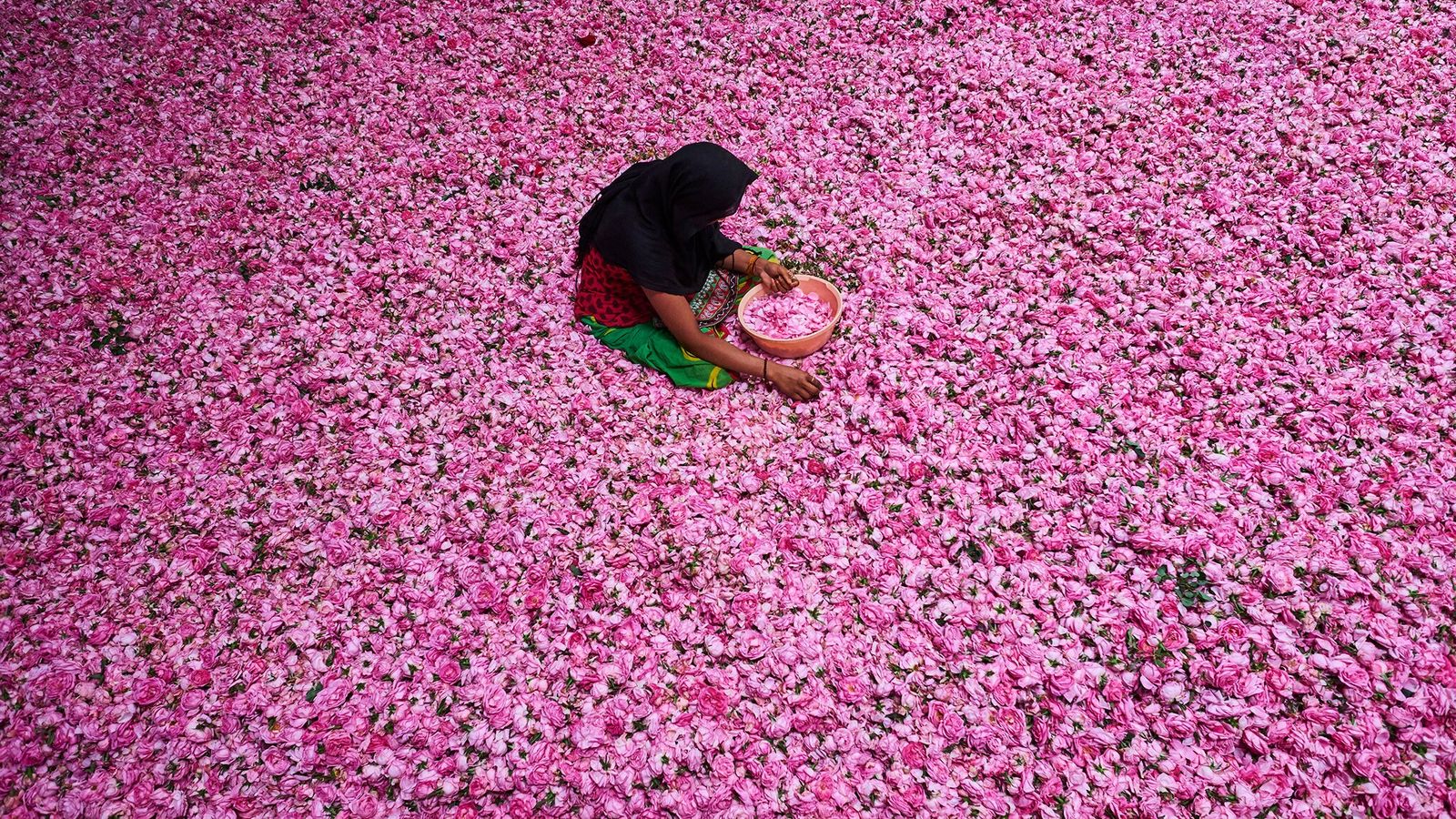
Although Damask roses are cultivated in other parts of India, the varietal favors Ganges alluvial soils surrounding the city of Kannauj. For more than 400 years, the highly fragrant roses from Kannauj have gone into the creation of rose attar using time-tested distillation methods.
Long before sunrise Tegh Singh arrives at his flower farm on the banks of the Ganges. He circles the haphazardly planted Rosa damascena shrubs, plucks blossoms at peak bouquet, and tosses the light pink petals into a jute sack slung over his shoulder. By the time the first rays of sunlight skim across the river, 35-year-old Singh is on his motorcycle, ferrying his harvest to the small city of Kannauj, known as the perfume capital of India.
For centuries Kannauj (pronounced kunh-nowj), in northeast India’s Ganges belt, has been crafting oil-based botanical perfumes called attar using time-tested distillation methods. Sought after by both Mughal royals and everyday folk in ancient India’s fragrance-obsessed culture, Kannauj attar scented everything from wrists to food, fountains to homes.
Although attars fell out of fashion in the 20th century, Kannauj perfumers continue to ply their craft the same old-fashioned way—recently awakening a new generation, at home and abroad, to the allure of its sensual scents.
The aroma of attar

Attar is old-world perfumery. Rooted in the Latin per and fume (through smoke), perfume got its start with humans crushing and infusing botanicals directly into oil or water. Unlike modern perfumes, which have alcohol as a carrier or solvent—because it’s inexpensive, neutral, and easily diffused—attars traditionally use sandalwood oil, making them unctuous and highly absorptive. The scent of a droplet lingers pleasantly on the skin, sometimes for days.
In the countryside around Kannauj, Damask roses are harvested early every day by expert hands and delivered to master attar makers.
Equally enchanting to men and women, attars have an androgynous quality. They strike intense floral, woodsy, musky, smoky, or grassy notes. Trotted out by season, attars can be both warm (cloves, cardamom, saffron) and cooling (jasmine, vetiver, marigold).
Kannauj produces these, as well as the enigmatic mitti attar, which evokes the scent of earth after a rainfall thanks to baked alluvial clay in the distillation. Shamama, another coveted invention, is a distilled blend of 40 or more flowers, herbs, and resins that takes days to make and months to age. The scent manages to harmonize sweet, spice, smoke, and damp and whisks one off to an otherworldly realm. Renowned perfume houses in Europe use Kannauj attar—be it rose, vetiver, jasmine, and others—as a layer, a compelling chord in the composition of modern perfumery.
The art of perfume-making
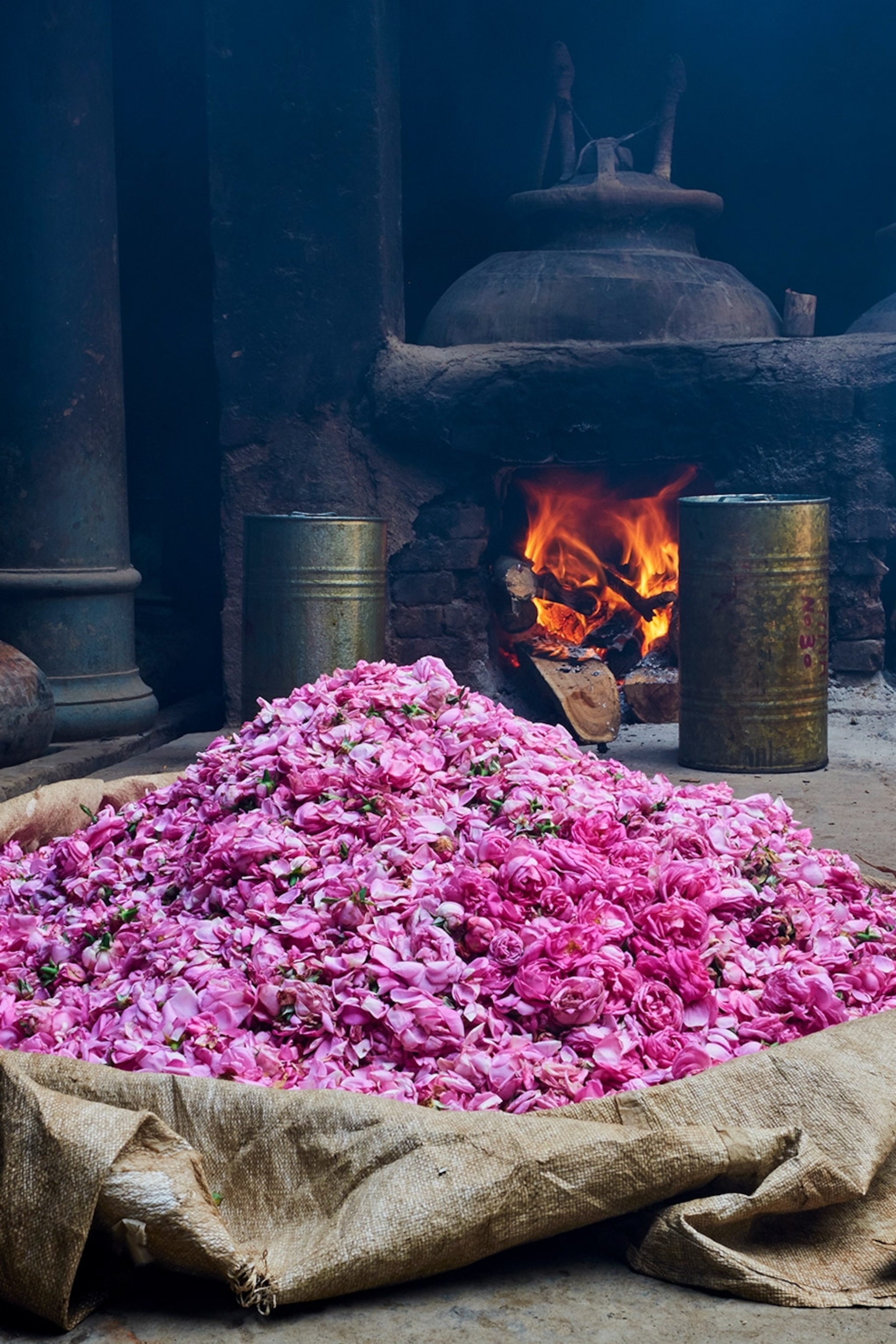
Kannauj has been concocting attar (also known as ittr) for over 400 years—more than two centuries before Grasse, in France’s Provence region, emerged as a perfume juggernaut. Known locally in Hindi as degh-bhapka, the artisanal method uses copper stills fueled by wood and cow dung.
Kannauj is a four-hour drive from Agra and just shy of two hours from historic Lucknow, a former princeling state governed by the Nawabs of Oudh. Like many smaller Indian cities, Kannauj is wedged somewhere between past and present. Time here doesn’t move on, it simply piles up.
Crumbling sandstone ramparts, onion-domed minarets, and scalloped archways recall the town’s early grandeur as the seat of the Harshavardhana Empire in the sixth century. On the main drag, puttering motorcycles and the occasional glistening Mercedes careen past fruit sellers pushing wooden carts piled high with guavas and overripe bananas.
Duck into the narrow lanes of Bara Bazaar, the main market, and Kannauj reverts fully to medieval times. In this labyrinth, longtime shops are crammed with finely cut glass bottles holding attar and ruh, or essential oil, each smelling better than the last. Men sit cross-legged on cushioned floor mats, sniffing vials and dabbing extraordinarily long perfumed cotton swabs behind their ears. Presiding over this age-old commerce is the attar sazh, or perfumer, conjuring and enticing with the aura of an imperial alchemist.

“The world’s best perfumers have walked through these narrow lanes, making their way through mud and cow dung to get their hands on Kannauj attar. There is really nothing like it,” remarks Pranjal Kapoor, the fifth-generation partner at M.L. Ramnarain Perfumers, one of the traditional distillers still operating here.
Tegh Singh arrives and unloads his bundles of blossoms in Kapoor’s godown, an open-air stone courtyard that serves as the distillery. Ram Singh, Kapoor’s master attar craftsman, scoops the petals into a bulbous copper still and tops it with fresh water. Before fastening the lid, Ram Singh packs the rims with a clay-and-cotton mash, which hardens and creates a formidable seal.
When the flowery concoction begins to simmer, steam travels from the still, via a bamboo reed, into a copper pot holding sandalwood oil, which readily imbibes the rose-saturated vapor.
It takes about five to six hours for Tegh Singh’s roses to become attar. Throughout this process, Ram Singh stays on his toes, hopping between the still and the pot, testing the water temperature with his hands and listening to the hiss of steam to intuit whether to feed more wood into the fire. “I’ve been doing this since I was a boy,” says the 50-year-old Ram Singh, who apprenticed with an attar guru for a decade
The process is repeated the next day, with a new batch of rose petals, to achieve the desired potency. Once this is done, the rose attar is aged for several months in a camel-skin bottle, which wicks moisture. The finished rose attar is akin to liquid gold. One kilo (2.2 pounds) can fetch up to $3,000.
“There are no gauges and meters, no electricity,” Kapoor points out, adding proudly that his humble wares rival those made by top modern perfume houses in Grasse. “The difference is like cooking daal [lentils] in a rustic, open-air village kitchen versus an LPG stove or a microwave. The taste will never be the same.”
Distilled history
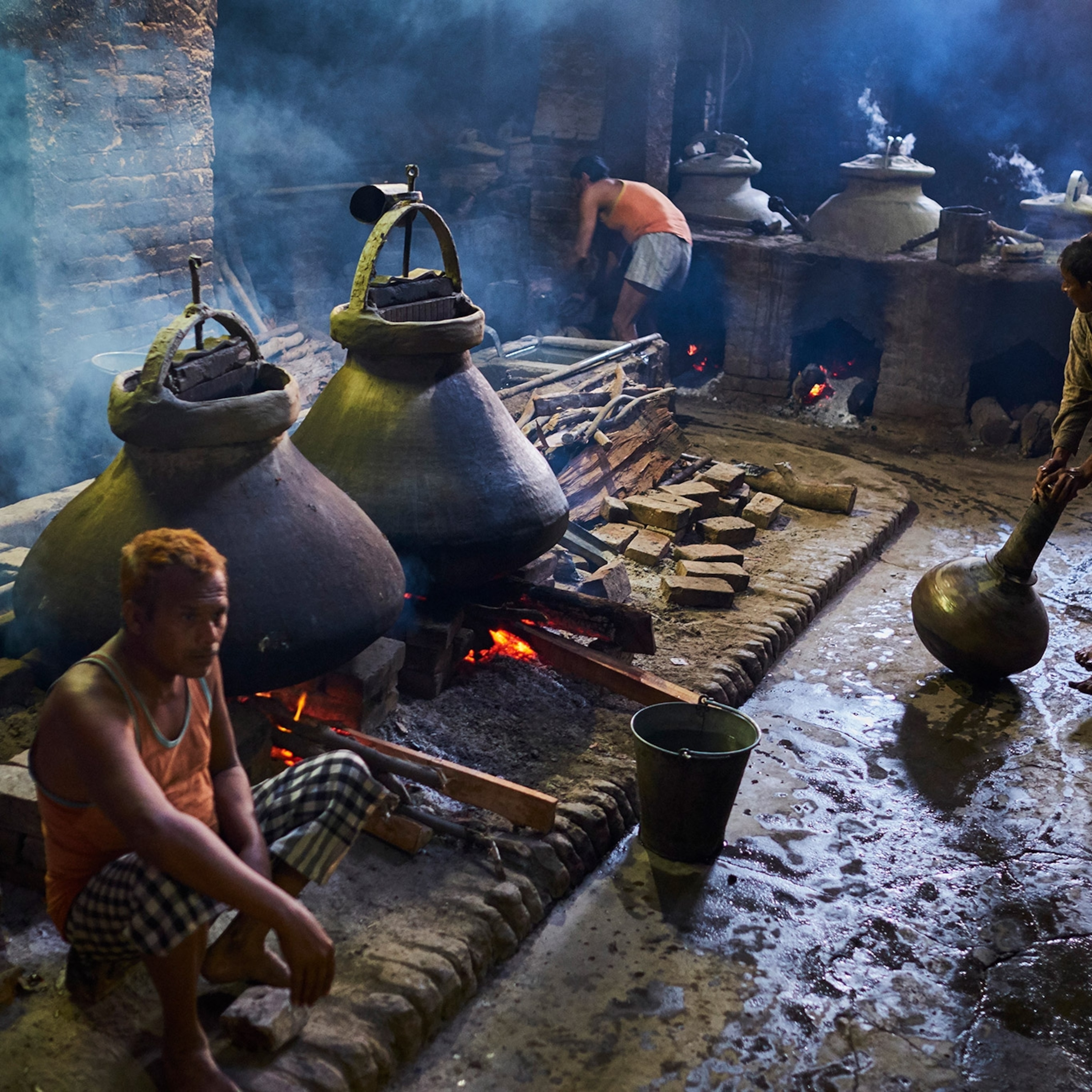
The earliest known botanical perfumes date back to ancient Egypt, when plants were crushed and infused directly into a base oil. Although the first hydro-distillation of plants is attributed to the Persian physician Ibn Sina, also known as Avicenna, in the 10th century, archaeological excavations in the Indus Valley uncovered rudimentary stills, suggesting that basic perfume making developed earlier.
In the 15th century, Gyatri Shahi, the Islamic ruler of central India’s Sultanate of Malwa, penned the Ni’matnama, or the Book of Delights, which delves into the world of sybaritic pleasures. Countless passages relay the virtues of smelling good.
The Mughals marched into India in the 16th century, bringing with them a lusty olfactory appetite. The first Mughal ruler, Barbur, celebrated the inextricable link between fragrance and spiritual and sensual contentment, and this ethos percolated in the halls of Mughal courts for the next two centuries.
Barbur’s son Akbar had a department dedicated solely to developing scents for corporeal and culinary purposes. The Ain-e-Akbar, or Constitution of Akbar, details the emperor’s predilections for dabbing his body with fragrant attars, burning incense, and rubbing doors and furniture with copious amounts of perfume. It is believed queens and courtesans wore their personal attar stash in miniature glass vials around their necks.
The Mughal emperor Jahanghir and his queen, Noor Jahan—parents of Shah Jahan, who went on to build the Taj Mahal—are considered Kannauj’s first royal patrons. According to local folklore, Noor Jahan ignited a run on rose attar after becoming beguiled by the scent of Kannauj roses in her bath.
Fragrance resurgence
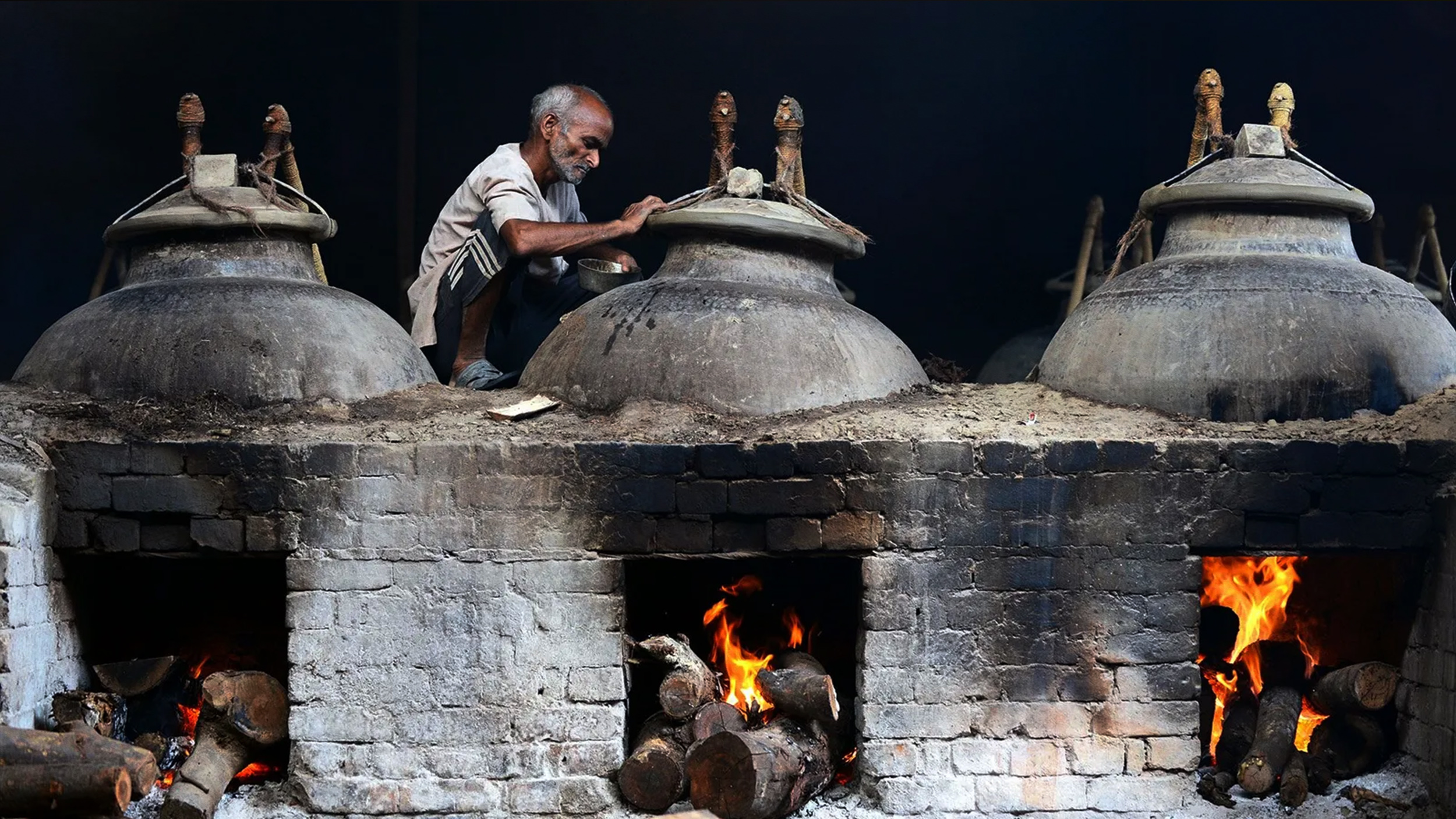
But why Kannauj? If you triangulate Agra, Lucknow, and Kanpur—three Mughal strongholds with a fondness for scent—Kannauj lies in the middle. Built atop rich alluvial Ganges soil, the town is particularly suited to cultivating jasmine, vetiver, and Damask rose, which owes its name to Damascus but is native to central Asia. Master perfumers were already in place in Kannauj, Kapoor explains. The Mughals simply fired up demand, and Kannauj jumped on the bandwagon.
These days, Kannauj is facing a reckoning. When power shifted to British India, demand for attar tapered. The price of pure Mysore sandalwood was always high, but when the Indian government restricted the sale of sandalwood in the late 1990s, the price of attar skyrocketed. At the same time, status-conscious Indians eager to present themselves as modern and upwardly mobile, shifted their allegiance to imported Western perfumes and deodorants. Natural substitutes, such as liquid paraffin, are used in lieu of sandalwood, and, while this iteration of attar is a close approximation, it doesn’t measure up to the original.
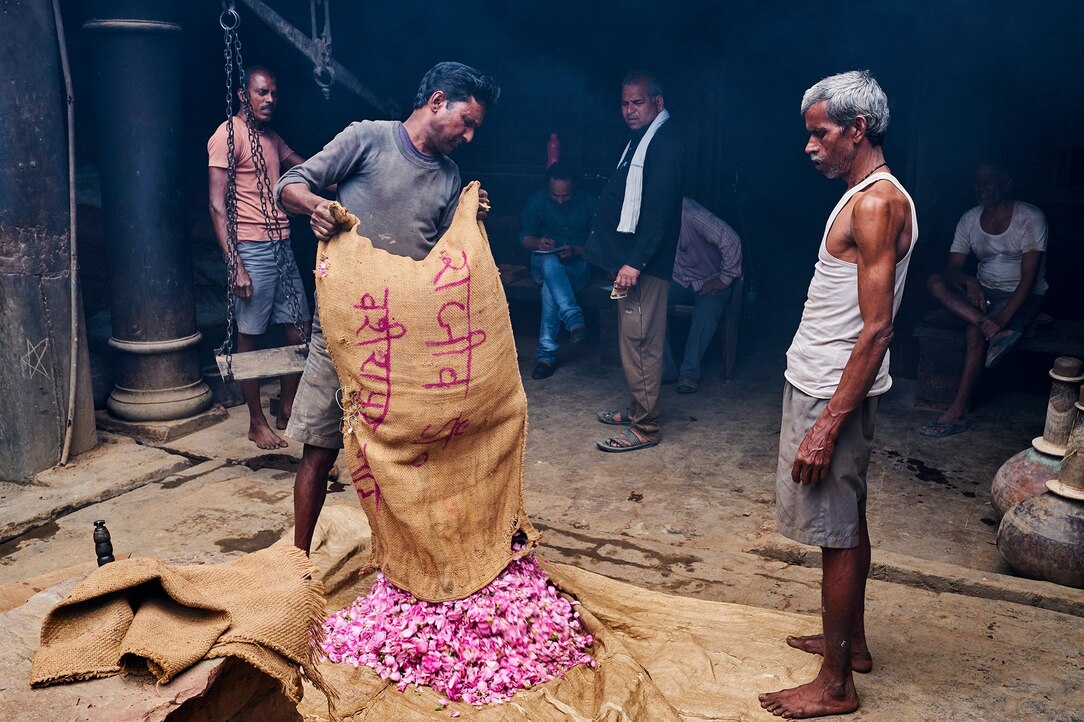
Today most Kannauj attar ends up in the Middle East and among regional Muslim communities in India. In Old Delhi’s Chandni Chowk, a 17th-century market built by Mughal emperor Shah Jahan, Gulab Singh Johrimal is a longtime institution that now carries both Kannauj attar and modern fragrances. It’s almost always full of Muslim men in search of attar to scent themselves before Friday prayers and festivals such as Eid.
Kannauj also produces an extraordinary amount of rose water for paan—a popular national snack of tobacco and spices wrapped in betel leaf. But these markets aren’t enough to sustain the town’s distilleries, and many have had to close or shift to making facsimiles of Western perfumes.
Nonetheless, Kapoor is optimistic. He spends much of his time courting top international perfume houses, touting the traditions of attar and the terroir of Kannauj botanicals. “Western tastes are shifting East,” Kapoor says. “Typically, [the West] prefers light, citrusy notes, but these days you see the big daddies like Dior, Hermès, and of course, the Middle Eastern perfume houses going for gilded scents like rose and shamama.”
A niche market for high-quality attar is simmering domestically, as well. Anita Lal, the founder of Good Earth and Paro, two contemporary lifestyle brands rooted in traditional Indian design and sensibility, does brisk business with classic rose and vetiver essential oils, though she is eager to reintroduce attar to younger generations.
“The tragedy of attar is two-fold,” Lal says. “Sandalwood is rare, and without it, it’s nearly impossible to capture the charm of attar. Second, attar is perceived as ridiculously old-fashioned. Pit that against the wiles of Western marketing and the lure of French perfume—well, you can see what we are up against.”
Perhaps attar’s most prominent global ambassador is native Lucknowi Jahnvi Lâkhòta Nandan, who trained as a master perfumer in Geneva and Paris for seven years before opening The Perfume Library, in Goa and Paris. For the ruling families of old Lucknow, she says, “talking about perfume was a pastime. Everything was fragranced: clothes, doorknobs, the air. And it was always understood that this attar must come from Kannauj.”
Nandan’s distillations are equal parts poetry, eccentricity, and science. Each year she bridges mythology and modernity with one, perhaps two, new scents, and attar is an important part of her repertoire. In 2020, The Perfume Library launched Earthshine, a blend of the sedgy nagarmotha, or nut grass, mimosa, and the androgynous maulshree. “Maulshree is deeply entwined with Kannauj,” Nandan says, adding that, as an ornamental favored in Mughal-era gardens, maulshree is a perfect ode to Kannauj and its attar-makers.
“Attar speaks to the soul. All the fire and smoke in a small space can seem apocalyptic, but it’s also authentic and beautiful,” she says. “You cannot recreate this in a lab in Europe.”

